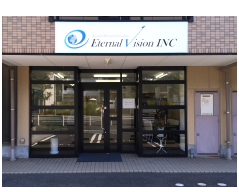
Questions concerning EV-gasification system
What is the gasification ability?
We will calculate and answer the gasification ability immediately after receiving the daily volume of waste required by the costumer.
How much is the price?
We will calculate and present the price immediately after receiving the manufacturing cost factors, such as customer’s required daily gasification volume, specified automatic control level, specified charging equipment, specified discharging methods.
How about the safety?
(1) The pressure in the gasification system is the atmospheric pressure or higher, or generally within 10 to 25 mmAq, not in a pressure vessel, also the pressure in the produced gas combustion chamber is constantly within 10 to 25 mmAq, and therefore, no backfire nor explosion is caused.
However, is it strictly prohibited to charge any sealed article or solvent, etc.
(2) Because there is no opening other than the exhaust port (stack = ventilation stack) which connects to the atmosphere, no leakage, sprouting out of gas or fire in the process is caused. Meanwhile, this also means that no leakage of hazardous gas (HCl, SOx, dioxins, etc.) is caused.
However, is it strictly prohibited to charge any sealed article or solvent, etc.
(2) Because there is no opening other than the exhaust port (stack = ventilation stack) which connects to the atmosphere, no leakage, sprouting out of gas or fire in the process is caused. Meanwhile, this also means that no leakage of hazardous gas (HCl, SOx, dioxins, etc.) is caused.
How about the generation and emission of dioxins?
Our company’s EV-gasification system is the complete combustion type which was developed by GENERAL GIKEN CO., LTD. for the first time in Japan to control carbon monoxide (CO), soot (C) and dioxins, and it has a complete combustion performance of 99.7% or higher.Therefore、Due to gasification combustion system, this system has good combustibility and leads to complete combustion.
Consequently, the concentration of dioxin and dust is at the low level. Further, since cinders cause the ember combustion at 1.200℃, dioxin in residue is also extremely little quantity.
Besides, in the structure of this device, there is no place at all where combusting gas comes into direct contact with the copper plate (substances which may generate or become a catalyst for generation of dioxins, such as ferric chloride, ferric oxide are generated on the surface), and the inner surface is made of 100% fire-proof ceramics (there’s no catalytic action for generation of dioxins).
Consequently, the concentration of dioxin and dust is at the low level. Further, since cinders cause the ember combustion at 1.200℃, dioxin in residue is also extremely little quantity.
Besides, in the structure of this device, there is no place at all where combusting gas comes into direct contact with the copper plate (substances which may generate or become a catalyst for generation of dioxins, such as ferric chloride, ferric oxide are generated on the surface), and the inner surface is made of 100% fire-proof ceramics (there’s no catalytic action for generation of dioxins).
How about the power-saving level?
We determine the power-saving level of ① Manual, ② Semi automatic, and ③ Full automatic through consultation with customers, and the number of operators required for ① Manual level is one (1) for the systems we already installed.
The power-saving level is enhanced in ② Semi automatic, and further in ③ Automatic, however, this does not mean unmanned operation in terms of security.
For example, in ③ Full automatic control, automatic operation is carried out from the automatic ignition of combustibles in the gasification system up to discharging of ash.
The power-saving level is enhanced in ② Semi automatic, and further in ③ Automatic, however, this does not mean unmanned operation in terms of security.
For example, in ③ Full automatic control, automatic operation is carried out from the automatic ignition of combustibles in the gasification system up to discharging of ash.
How long is the product life of the gasification system?
In our actual records so far, the product life lasted as long as around 30 years (however, periodic or non-periodic maintenance may be required).











